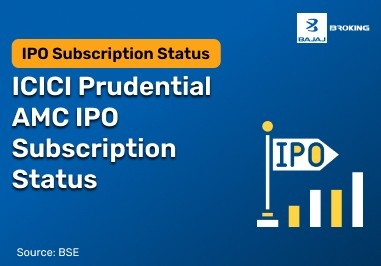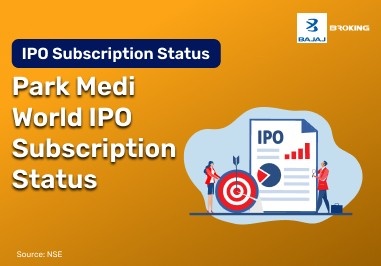If you are a freelancer in India, understanding GST is not optional—it is essential. Whether you are offering content writing, graphic design, consultancy, or IT services, you may fall under the GST framework. Knowing how to register, calculate tax using a GST calculator, issue compliant invoices, and file timely returns is part of running your business responsibly. GST for freelancers also determines how you charge clients and claim input credits. The process might seem complex, but once you know the documents, thresholds, and timelines, it becomes manageable. This guide simplifies GST meaning, registration, rates, and compliance.
Who Are Freelancers Under Gst in India?
Freelancers are individuals who offer services independently without being formally employed by an organisation. Under GST, freelancers are considered service providers if they earn income by providing services in exchange for payment. You could be a writer, marketer, software developer, or online tutor—if you invoice clients and provide digital or offline services, you are liable for GST if your revenue exceeds the specified threshold. Freelancers offering OIDAR services to clients outside India may need to register regardless of income. Keeping your PAN and Aadhaar linked and updated is critical during registration.
Gst-Applicable Freelance Services in India
As a freelancer, you need to know whether your services are taxable under GST. Most service-based freelancing activities are covered. The section below outlines common GST-applicable freelance services.
Content writing and blogging
Content creation services attract GST if your income exceeds Rs. 20 lakh. This includes SEO content, copywriting, editing, and blogging projects.
IT and software development
Freelancers offering web development, app development, and other tech services must register if they cross the GST threshold or work with overseas clients.
Marketing and digital consulting
If you handle paid advertising, branding strategy, or digital marketing, GST for freelancers applies once you exceed the exemption limit.
Graphic design and multimedia
Providing design services such as logos, videos, or social media creatives attracts GST if the income surpasses the Rs. 20 lakh threshold.
Tutoring and online coaching
Freelancers offering paid webinars, e-courses, or online education must register under GST once they hit the revenue threshold.
Overview of OIDAR Services for Freelancers
Online Information Database Access and Retrieval (OIDAR) services apply when you provide digital services to clients outside India. Freelancers working with foreign clients need to understand how OIDAR impacts their GST obligations.
Definition of OIDAR
OIDAR includes services delivered online with minimal human intervention such as digital downloads, e-books, or automated tools.
Applicability for foreign clients
If you serve overseas clients and receive payments in foreign currency, GST registration is mandatory—even if your total income is below the threshold.
Tax rate and compliance
The applicable GST rate is 18% on OIDAR services. Freelancers must file regular returns and comply with GST invoicing norms.
Export of services
If conditions for export are met, such as receipt in convertible foreign exchange, the supply may be zero-rated.
Registration process
Freelancers providing OIDAR must register under GST as a normal taxpayer (not composition) and comply with monthly return filing.
Required documents for freelancer GST registration
Before registering, gather the necessary documents. These help verify your identity, business location, and nature of services. Proper documentation ensures smooth registration and faster processing.
PAN and Aadhaar card
Your PAN and Aadhaar must be linked. These are essential for identity verification during registration.
Photograph
A recent passport-size photo is required to complete your application profile as a sole proprietor.
Proof of business address
Electricity bill, rent agreement, or NOC from the property owner serves as proof of address.
Bank account details
A cancelled cheque or passbook copy is required to verify the account where you will receive payments.
Digital signature or e-sign
While not mandatory for proprietors, it simplifies the registration process if used.
How to Register for Gst for Freelancers?
The registration process for freelancers under GST is done online through the GST portal. Follow the steps below carefully.
Visit the GST portal
Go to www.gst.gov.in and click on 'Register Now' under the 'Taxpayers' tab.
Fill Part A of the form
Enter PAN, email ID, and mobile number. Verify through OTPs sent to your contact details.
Receive TRN
After verification, you will get a Temporary Reference Number (TRN) to fill Part B.
Complete Part B
Enter business details, services offered, address, and bank account details. Upload documents and submit the application.
Verification and ARN
After verification, an Application Reference Number (ARN) is generated. You can track your registration status using this number.
Applicable GST rates for freelance services
GST for freelancers generally attracts an 18% rate unless otherwise specified. This rate applies to most professional services including IT, digital marketing, content creation, and consulting. There are no slab-based GST rates like income tax—one rate applies to most services. If your annual income crosses Rs. 20 lakh (or Rs. 10 lakh in special category states), you must register and apply this rate. Exported services may be zero-rated. Using a GST calculator can help determine the tax to charge on invoices.
How to Calculate Gst for Freelancers?
You must calculate GST on the total invoice value and add it as a separate line item. Here is how to do it correctly.
Identify the GST rate
Most freelance services attract 18% GST. Verify the applicable rate before invoicing clients.
Calculate GST amount
Multiply the invoice amount by 18% using a GST calculator. For Rs. 50,000, GST is Rs. 9,000.
Add GST separately
Always mention GST as a separate component on the invoice, not merged with the total.
Total payable amount
Add the GST to the base invoice value to arrive at the final amount payable by your client.
Keep track for return filing
Maintain a record of GST collected to match with your monthly and quarterly returns.
GST Invoicing Guidelines for Freelancers
Freelancers issuing GST invoices must follow certain rules. Issue the invoice within 30 days from the date of service. Mention the recipient’s GSTIN for B2B clients. Include SAC code for the service provided. Always retain a copy of each invoice issued. Use serial numbers consistently across the financial year. These steps ensure smoother GST compliance, especially while filing returns or responding to scrutiny. Also, ensure accuracy in billing to avoid mismatch issues.
Gst Return Filing Requirements for Freelancers
Freelancers registered under GST must file regular returns based on the type of registration.
Return Type
| Description
| Frequency
| Due Date
|
GSTR-1
| Details of outward supplies
| Monthly/Quarterly
| 11th of next month
|
GSTR-3B
| Summary of sales and tax payments
| Monthly
| 20th of next month
|
GSTR-9
| Annual return (if turnover > Rs. 2 cr)
| Annually
| 31st December (FY)
|
Timely filing helps avoid penalties and ensures smooth ITC claims. Freelancers using quarterly returns must opt for QRMP scheme.
Late filing penalty for freelancers under GST
Missing GST return deadlines results in financial penalties. These can add up quickly and impact your compliance status.
Late fee for GSTR-1 and 3B
Rs. 50 per day (Rs. 25 CGST + Rs. 25 SGST) is charged for each day of delay, subject to a cap.
Higher fee for NIL returns
Even if no transaction occurs, a Rs. 20 per day penalty applies for late NIL return filing.
Interest on delayed payment
18% per annum interest is charged on delayed tax payments from the due date till payment.
Impact on ITC claims
Late filings may block your client’s ability to claim input tax credit, affecting business relationships.
Risk of cancellation
Repeated non-compliance can lead to suspension or cancellation of your GST registration.
Final thoughts
Understanding GST for freelancers is about more than registration—it is about ensuring you stay compliant, transparent, and client-ready. From linking PAN and Aadhaar, to using a GST calculator for invoice generation, every step counts. Once you understand the applicable tax rates, invoicing standards, and filing timelines, you can manage GST responsibilities efficiently. This also helps you avoid penalties, improve client trust, and stay organised during income tax and GST return filing season.














